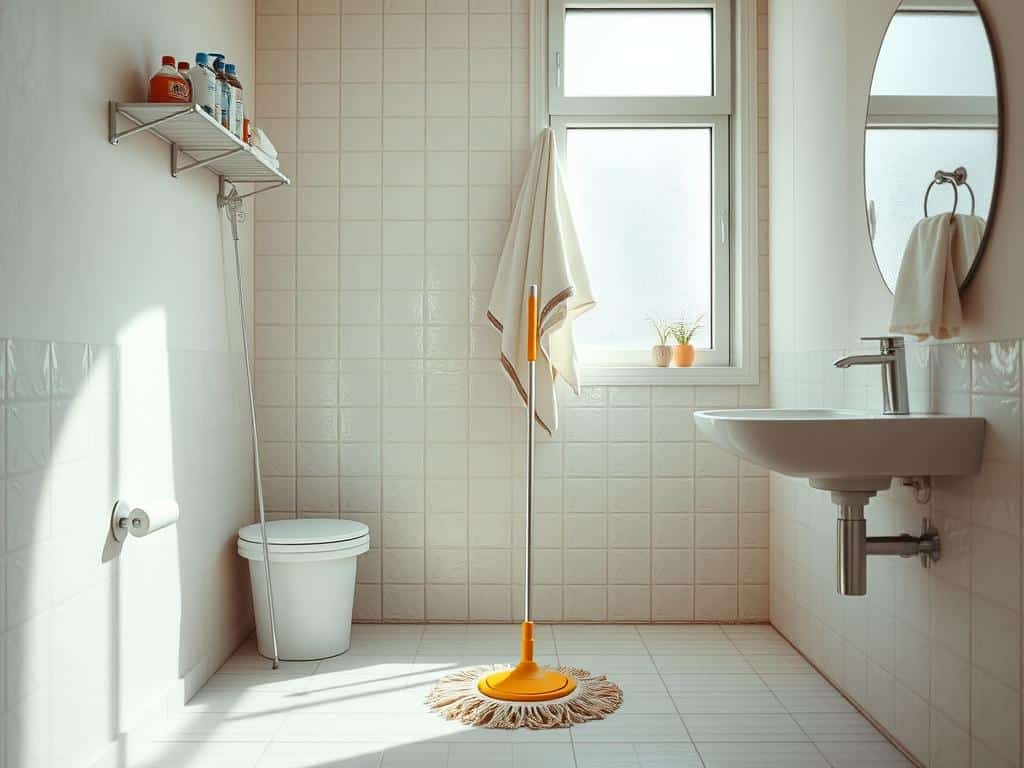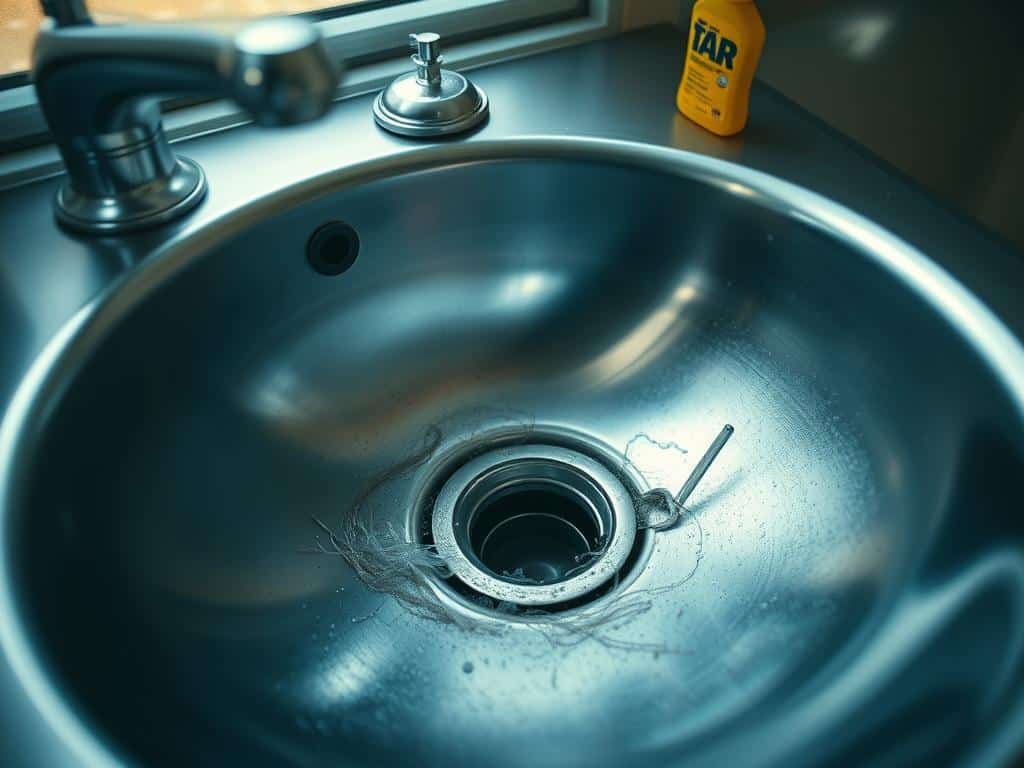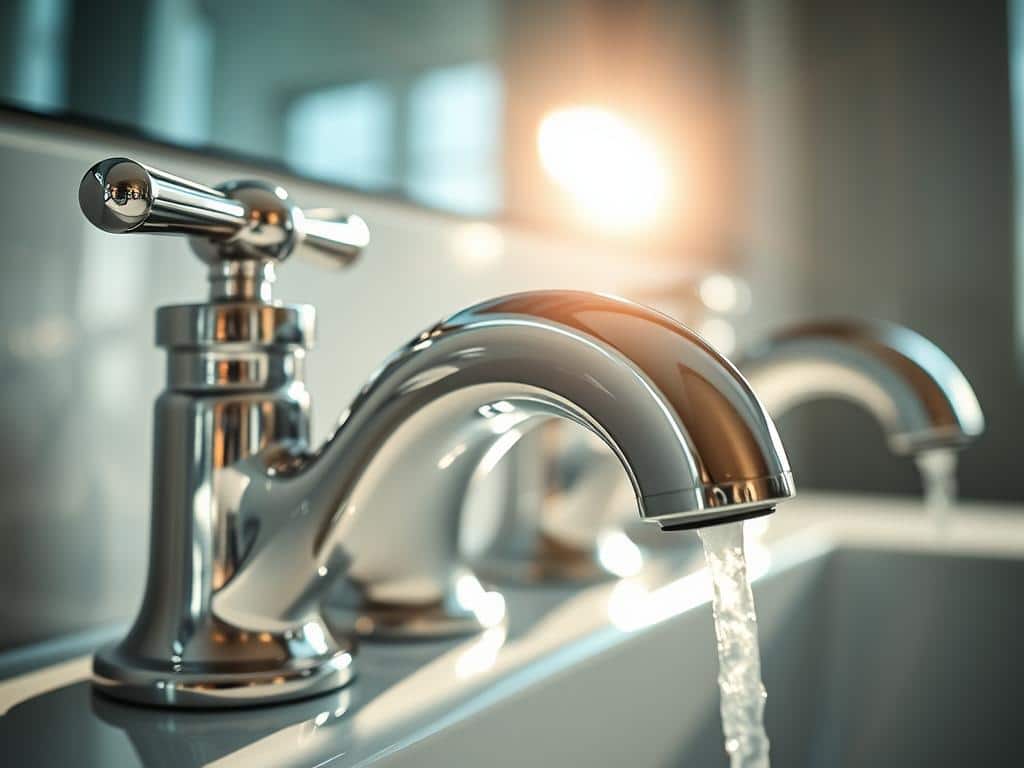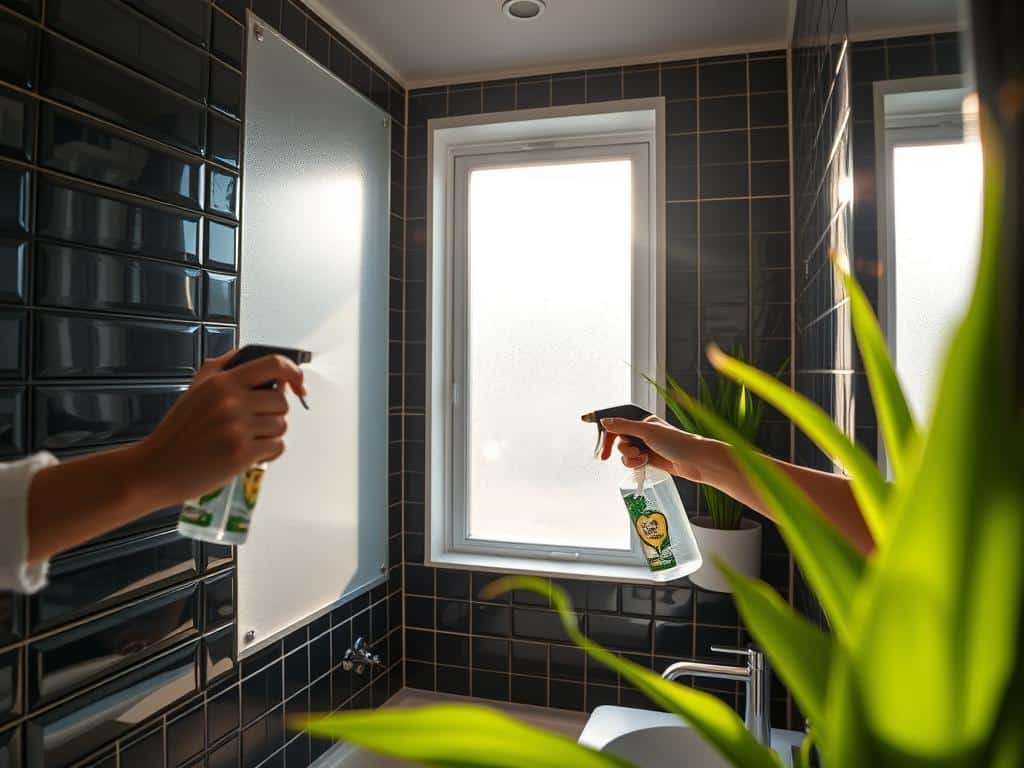
Mold in bathrooms can cause health issues like breathing problems, headaches, and skin issues. It’s important to know how to get rid of mold quickly. This is because mold loves damp places like bathrooms due to moisture and bad air flow.
Mold can grow on walls, ceilings, and tiles, but also in hidden spots. Places like grout, curtains, and vents can also have mold. Small mold problems can be fixed by yourself. But for big problems, it’s best to call experts like PuroClean.
To remove mold, you need to follow certain steps safely. You can use simple items like vinegar and baking soda, or stronger things like hydrogen peroxide and borax. Always wear protective gear and make sure the area is well-ventilated. This keeps mold spores from spreading and protects you from bad particles.
Common Causes of Bathroom Mold
Knowing why mold forms in bathrooms helps us fight it better. Bathrooms get moldy easily due to water and humidity. Let’s look at the main reasons:
High Humidity and Poor Ventilation
Keeping moisture low is key. Hot showers make the air humid, which settles on surfaces, perfect for mold. Without good air flow, this moisture has nowhere to go.
Leaks and Standing Water
Dripping taps and toilets can lead to mold. Hidden leaks in walls or floors are especially tricky. Also, water that stands still from these leaks invites mold. Fixing leaks quickly helps stop mold from growing.
Condensation and Damp Surfaces
Cool surfaces meeting moist air cause condensation. This makes mirrors, windows, and tiles moldy if left wet. Using exhaust fans or dehumidifiers keeps things dry and fights humidity.
Essential Tools and Safety Precautions
Removing mold in your bathroom requires careful steps. This is to ensure effective cleaning as well as your safety. Using proper safety measures protects you and your home from mold spores.
Protective Gear
It’s crucial to wear protective cleaning attire when handling mold. Key items include safety goggles, rubber gloves, and a mask, like an N95, for breathing protection. For eye safety, the EPA suggests Pyramex G704T Chemical Splash Goggles. Moldex provides full-face masks for all-around protection. For cleaning agents like bleach, Ansell 37-155 Unlined Nitrile Gloves are recommended.
Cleaning Supplies and Equipment
You need good cleaning supplies to get rid of mold. Use vinegar, baking soda, and bleach for various surfaces. To clean painted drywall ceilings, mix bleach with water and dish soap following a 10:20 ratio, plus soap. Use a mix of one part bleach to three parts water in a spray for walls.
Ventilation and Containment
Preventing mold means keeping air moving and sealing off moldy spots. Box fans can help with air flow. Remember, mixing bleach and ammonia is dangerous. The EPA warns against it due to toxic fumes. Cover areas with plastic sheeting to avoid spreading mold spores.
| Mold Safety Gear | Recommended Brands |
|---|---|
| Safety Goggles | Pyramex G704T |
| Respiratory Masks | Moldex Full-Face Mask |
| Gloves | Ansell 37-155 Nitrile Gloves |
After you clean, keep vacuums outside to avoid bringing spores back in. Seal and throw away any moldy materials safely. Following these steps will help you clear mold correctly and keep your home healthy.
Effective Methods for Removing Bathroom Mold
Bathroom surfaces can be cleaned with natural or chemical methods to remove mold. Let’s look at some effective ways to keep your bathroom mold-free.
Using Vinegar and Baking Soda
Vinegar and baking soda are great for cleaning mold. Mixing vinegar with water in a spray bottle kills black mold. Baking soda mixed with water is also effective. Spray these on areas like tile grout and walls, let them sit, then scrub and rinse.
Applying Borax Solutions
Borax stops mold from growing due to its pH level. Mix a cup of borax in a gallon of water and apply it. Scrub the surfaces and rinse. This keeps your bathroom free of mold.
Hydrogen Peroxide for Tough Mold
For hard-to-remove mold, use hydrogen peroxide. Mix it with water and apply it to moldy spots. Let it work for 10 minutes before scrubbing. This is safe for most bathroom surfaces.
Using Bleach for Visible Mold
Bleach works well on nonporous surfaces with visible mold. Mix bleach with water and spray it on the mold. Let it sit, then wipe it off. Be careful not to use bleach on porous surfaces.
To better understand how to keep your bathroom free of mold using natural cleaners, visit this expert resource. You can also find additional expert advice for special cleaning needs.
| Cleaning Solution | Ratio | Application |
|---|---|---|
| Vinegar | 1:1 (vinegar to water) | Spray bottle, leave for 30 minutes, scrub and rinse |
| Baking Soda | ¼ tbsp per cup of water | Spray bottle, sit for 30 minutes, scrub and rinse |
| Borax | 1 cup per gallon of water | Scrub and rinse |
| Hydrogen Peroxide | 1:3 (peroxide to water) | Spray bottle, sit for 10 minutes, scrub and rinse |
| Bleach | 1 tsp per cup of water | Spray bottle, sit for 5-10 minutes, scrub and rinse |
Preventing Mold Growth in the Future
Stopping mold takes careful moisture control and upkeep. Keeping good ventilation is a key step in avoiding mold for good. Make sure your bathroom has a working exhaust fan that fits its size. This will remove humidity fast after you use the shower or bath.
Maintain Proper Ventilation
Ventilation is key to keeping humidity low and stopping moisture. Running the exhaust fan for 30 minutes after a shower or bath helps a lot. It lowers the chances of mold on your walls and ceiling. Also, open the doors and windows to boost airflow. This is important to stop water from building up and makes wet surfaces dry faster.
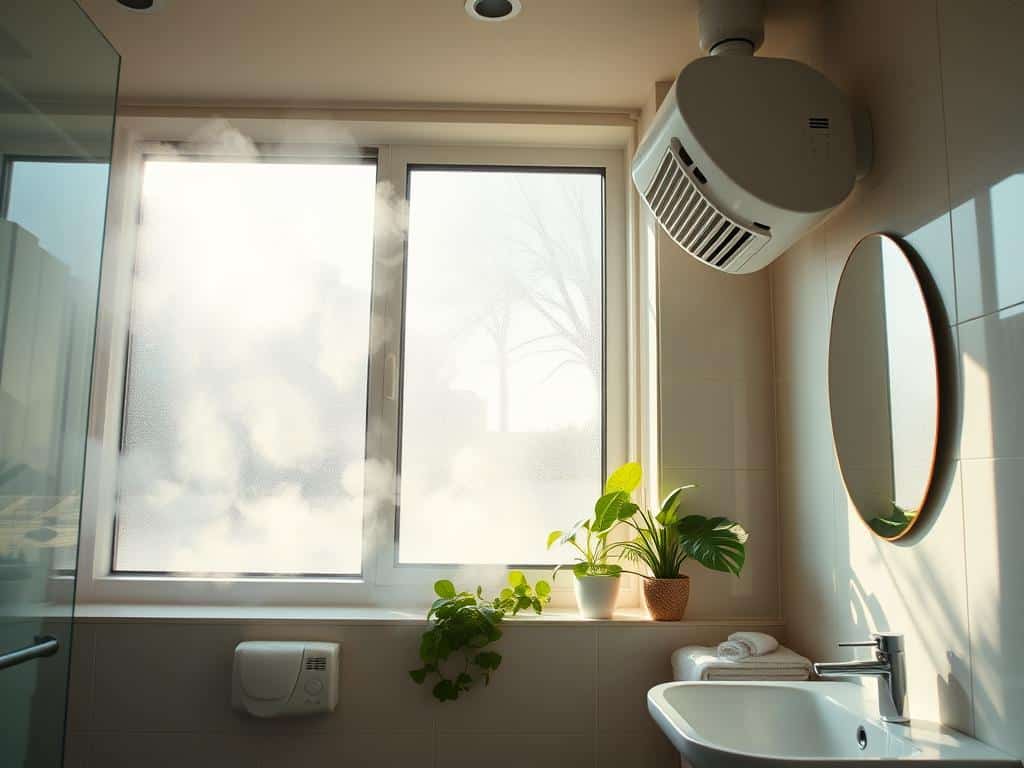
Fix Leaks Promptly
Quickly fixing leaks helps stop moisture. It’s important to regularly check sinks, toilets, and pipes for any leaks. Fixing leaks right away stops mold from starting. Sealing grout in tiled bathrooms each year also helps. It stops moisture from getting into small cracks, fighting off hidden mold.
Regular Cleaning and Maintenance
Cleaning your bathroom well and often is crucial. Wash towels, rugs, and curtains every week to cut down on mold risk. Use mold-fighting cleaners or vinegar. For tips on keeping your bathroom and other items clean, check out this detailed cleaning guide.
For better mold control, think about using mold-resistant paint. Clean your tub, shower, and sink regularly to get rid of soap scum. This will help keep your bathroom mold-free.
Conclusion
Mold removal needs quick action to stop health issues. Bathrooms often have the perfect wet conditions for mold to grow. By knowing and tackling mold causes, like high moisture and bad air flow, you can fight mold well.
Get the right gear, like Personal Protective Equipment (PPE), to safely remove mold. Use the best cleaners for the job, like vinegar for light mold or hydrogen peroxide for tough mold. Keep your home mold-free by using exhaust fans, fixing leaks fast, and cleaning regularly.
To keep your home healthy, focus on every detail of mold prevention. Know the difference between mold and other stains. Keep indoor air dry, under 50% humidity. If the mold is bad or in your HVAC, get professional help. Following these steps gives you a cleaner, healthier home now and in the future.

